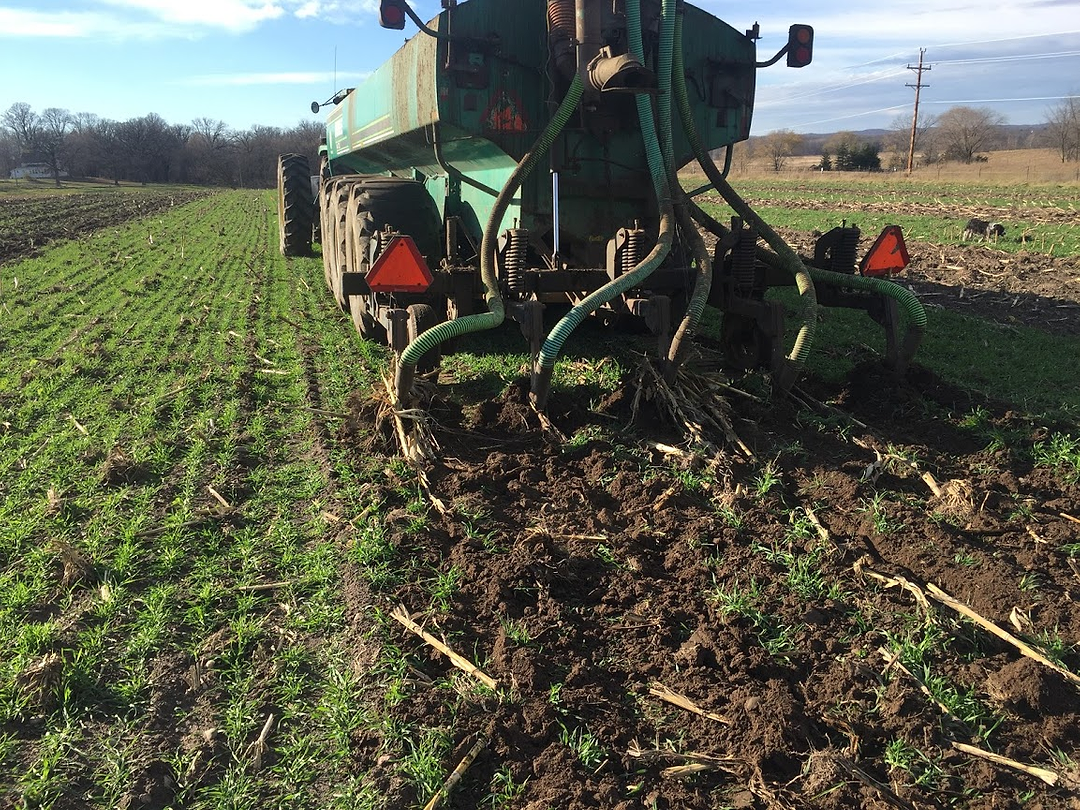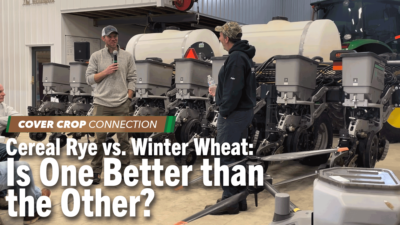By: Melissa Wilson
Thinking about applying manure soon on fields where short-season crops like sweet corn or peas have already come off or will be harvested in the next few weeks? Consider planting a cover crop to hold the nutrients in place this fall and next spring.Here are four potential options and some tips for combining a cover crop with a manure application:
1. Broadcast seed, then spread manure
- For solid manure that won’t be incorporated, make sure it isn’t applied too thickly so that the cover crop can push through.
- For both solid and liquid manures, incorporation shortly after the manure is spread can help retain nutrients and improve seed-to-soil contact for the cover crop. Shallow incorporation will keep the seeds closer to the soil surface, leading to better cover crop establishment compared to deep incorporation or if the seeds were not incorporated at all.
- Try to get the seed planted as soon as possible after manure application. This will allow for more fall growth and more time to capture nutrients that were applied in the manure.
- This option may allow for the cover crop to be drilled, which will improve establishment.
- Some researchers and farmers in the upper Midwest have experimented with mixing cover crops into liquid manure slurries and applying it all in one pass. This seems to work with most cover crops species, except for red clover. Remember, most cover crop seed doesn’t like to be buried very deeply, so choose an application system that includes shallow incorporation or injection.
- If doing this with tankers, you’ll likely want some agitation in the tank to keep the seeds well mixed instead of floating or settling at the bottom.
- If doing this with a dragline system, you’ll need to figure out a way to meter the seed into the pit as it is being pumped to get consistent seeding rates out in the field. Some Minnesota-based folks are experimenting with this!
- Once the cover crops are established and have a good root system, they are better able to capture nutrients more quickly. Make sure the manure injection unit has minimal soil surface disturbance to maximize cover crop growth.
- Recent research in Minnesota found that implements with aggressive tillage reduced fall stand in winter rye cover crops, although there was some recovery in the spring. Implements with less surface disturbance had more fall and spring winter rye growth.





Post a comment
Report Abusive Comment